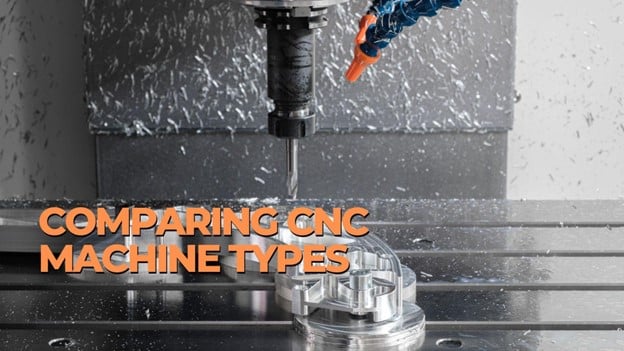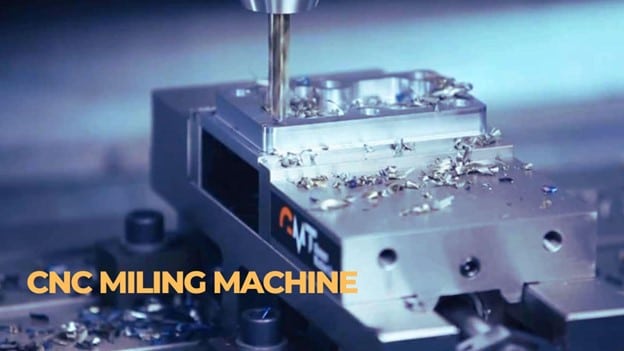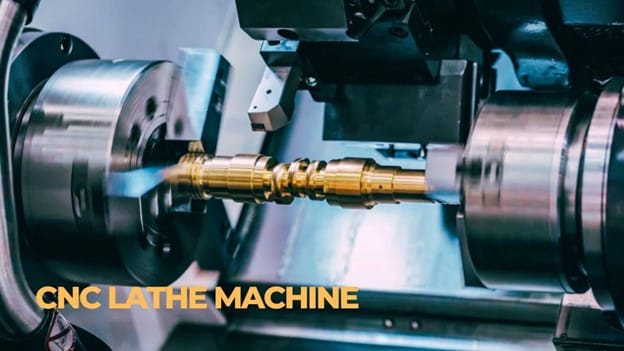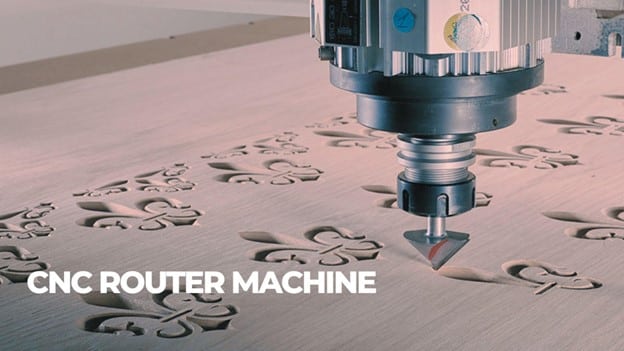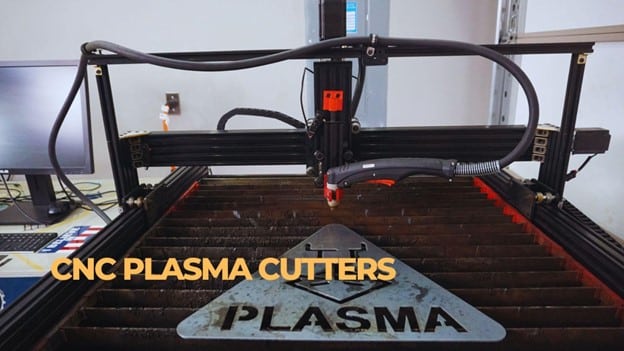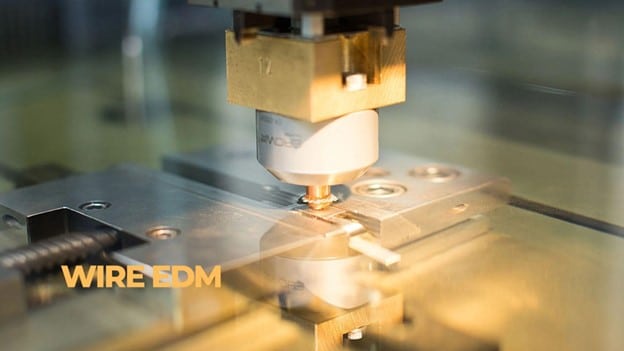With the different types of CNC machines in the market, sometimes it is very confusing to know which one best fits your project.
Each machine type offers distinct advantages, tailored for specific materials and production needs. Whether you’re working with metals, wood, or intricate designs, the right CNC machine can significantly impact your workflow and product quality.
In this guide, we’ll walk you through the most popular CNC machine types, breaking down their capabilities and applications, so you can make an informed decision based on your project’s unique demands. Ready to dive in? Let’s explore the best machine for your needs!
What are the 5 common types of CNC machines
The most common types of CNC machines are milling machines, lathes, routers, plasma cutters, and EDMs (Electrical Discharge Machines). Each machine is used for different tasks and materials, making them ideal for specific projects.
Below, we will take a closer look at each type to help you understand their uses and advantages.
1. CNC Milling Machines: A Versatile Workhorse
CNC milling machines are incredibly versatile due to their ability to perform a wide range of functions like drilling, cutting, and shaping. They typically feature rotating cutting tools that remove material from a solid workpiece. The precision of CNC milling machines makes them ideal for intricate designs requiring tight tolerances, as small as 0.0001 inches.
Companies that manufacture everything from electronics to medical devices use CNC mills internally. These machines make small, intricate parts. Like a Swiss Army knife in machining, they can do it all.
Pros:
- High precision and accuracy
- Suitable for complex designs
- Can work with various materials
Common Applications:
- Prototyping
- Complex components for aerospace, automotive, and electronics
Best For:
- Projects requiring high-detail and complex shapes
- Small to medium-sized parts
Best Features:
- Spindle Speed & Tool Change: CNC milling machines offer customizable spindle speeds and automatic tool-changing systems, making them efficient for various materials such as metals, plastics, and composites. The machine’s power and speed can significantly affect material removal rates and the overall production time.
- Multi-Axis Capability: While 3-axis machines are standard, advanced CNC mills feature 4-axis or 5-axis functionality. The latter allows for more complex geometries and reduced setup times since multiple surfaces can be machined simultaneously.
Most CNC milling machines operate with a precision tolerance of around 0.0001 inches, depending on the material.
For those working in aerospace or medical device manufacturing, exact tolerances are critical. Therefore, a high-end 5-axis milling machine might be necessary to handle intricate geometries.`
According to McKinsey & Company’s Industry Report on CNC Trends (2023), industry experts from NIMS recommend CNC mills for high-precision projects due to their versatility in multi-axis machining.
Need expert advice on CNC machining? Whether it’s milling, turning, or plasma cutting, reach out to experienced CNC professionals such as Art Machining who can help turn your project vision into reality.
2. CNC Lathes: Fast and Efficient
CNC lathes specialize in creating cylindrical components by rotating the workpiece while a cutting tool shapes it. Known for their efficiency in high-volume production, lathes are a go-to solution for industries requiring round parts, such as spindles, nozzles, and shafts.
Lathes are designed for speed and effectiveness, producing large quantities of parts in the shortest amount of time.
Are you in urgent need of cylindrical parts as soon as possible? Then a CNC lathe would be ideal for you.
Pros:
- Highly efficient for symmetrical parts
- Fast production speed
- Great for long, continuous cuts
Common Applications:
- Shafts
- Pipes
- Spindles
Best For:
- Round or cylindrical parts
- Fast, high-volume production
Top Features
- Live Tooling: Many modern CNC lathes come equipped with live tooling, enabling them to perform milling, drilling, or tapping operations in a single setup. This reduces the need for multiple machines and improves productivity.
- Turret Design: The tool turret on a CNC lathe can hold multiple cutting tools, allowing for faster tool changes and minimizing downtime. This is crucial for achieving high throughput in industries like automotive manufacturing.
CNC lathes can achieve tight tolerances; engineers from CNC first said it can achieve often within 0.001 inches. The National Institute for Metalworking Skills (NIMS) provides certification programs to ensure machinists meet industry standards for precision turning.
Moreover, companies like Mazak are known for their advancements in multi-axis lathe machines. These machines allow for more complex operations, such as drilling and milling on the same workpiece.
3. CNC Routers: Ideal for Large Materials
CNC routers are designed for cutting larger materials like wood, plastic, and softer metals. They excel in high-speed applications where intricate designs and large surface areas are involved, such as cabinetry, sign-making, and furniture production.
However, they excel in large-scale projects. They can achieve tolerances of up to 0.002 inches, which is sufficient for tasks like woodwork and plastic cutting. If your project requires tighter tolerances, CNC milling machines are a better fit.
These machines also provide both accuracy and speed. They are ideal for projects that are large in scale.
Pros:
- Great for cutting large, flat materials
- Can handle intricate designs
- Faster than manual routing
Common Applications:
- Woodworking
- Furniture making
- Sign Making
- Decorative panels
Best For:
- Woodworking projects
- Engraving and 3D carving on large surfaces
Top Features
- Cutting Area: CNC routers often feature larger work surfaces, making them ideal for handling sizable sheets of material. Common models offer work areas as large as 4 feet by 8 feet, and industrial models can go even bigger.
- Spindle Power: Routers typically have less powerful spindles compared to CNC mills, which makes them more suited for cutting through softer materials rather than metals. However, high-end routers with stronger spindles can handle light metal cutting tasks.
Are big materials and designs involved in the process? Perhaps a CNC router is what you need. Get in touch with a Chinese machining factory to discuss how their CNC routers can deal with your project.
4. CNC Plasma Cutters: Precision in Metal
CNC plasma cutters use a plasma torch to cut conductive materials like steel, copper, and aluminum. They are favored for metal fabrication projects where speed and precision are critical, such as in automotive repair and metal art.
CNC plasma cutters can work with materials as thick as 1.5 inches. They can achieve cutting speeds of up to 20 inches per minute, depending on the thickness of the material.
According to The American Society of Mechanical Engineers (ASME), plasma cutters are ideal for industries where speed and precision are critical, such as metal fabrication.
Moreover, plasma cutters leave clean edges and are extremely accurate. It works wonderfully for metal-cutting projects of any size.
Pros:
- Highly effective for cutting thick metal
- Fast cutting speed
- Minimal material wastage
Common Applications:
- Metal fabrication
- Automotive repair
- Construction
Best For:
- Metal fabrication
- Cutting large metal sheets quickly
Top Features
- Cutting Thickness: Plasma cutters can handle metal sheets up to 1.5 inches thick, making them ideal for heavy-duty applications. Depending on the power source, cutting speed can reach up to 20 inches per minute, significantly reducing production time.
- Material Compatibility: Plasma cutters are compatible with a range of conductive materials, from thin sheets to thicker plates. Their versatility makes them useful for various industries like construction, shipbuilding, and metal fabrication.
So if your project requires the need to cut through metals, a CNC plasma cutter may be in order. Find a good CNC factory and discuss options with them.
5. CNC Electrical Discharge Machines (EDM): To Work on Hard Metals
CNC EDMs are specialized machines that use electrical sparks to erode material from a workpiece. They excel in working with hard metals like titanium, Inconel, and hardened steel, commonly used in aerospace, medical device, and mold-making industries.
Moreover, EDMs are highly accurate with tolerances as fine as 0.0001 inches. They excel in industries where intricate designs and hard metals are common.
According to NIMS, EDM technology is often the go-to solution for projects requiring non-traditional machining techniques. These techniques go beyond the capabilities of standard cutting tools.
Pros:
- Works with hard metals
- Can create complex and fine details
- Non-contact machining
Common Applications:
- Mold making
- Tool and die manufacturing
- Precision parts for aerospace and automotive industries
Best For:
- High-precision molds
- Hard metals and complex shapes
Top Features:
- Wire EDM vs. Sinker EDM: There are two main types of EDMs—wire EDM and sinker EDM. Wire EDM is used for cutting through the entire thickness of a material, while sinker EDM is suited for creating complex shapes and cavities.
- Non-Contact Machining: EDM is a non-contact process, meaning it doesn’t exert physical pressure on the material. This makes it ideal for fragile parts or materials that could be damaged by traditional machining methods.
So, whether you are working with hard metals or intricate designs, a CNC EDM could be just what you need. Find a Chinese machining factory such as Art Machining that offers EDM services for consultation or quotation.
Still not sure which CNC machine is right for you? Get in touch with a professional CNC consultant to guide you through your options and ensure you make the best choice.
Factors to Consider When Choosing a CNC Machine
1. Project Requirements
Before deciding, think about what kind of parts or products you will be making. If your work involves intricate shapes, a CNC milling machine or laser cutter may be your best bet. If speed and efficiency are your priority, CNC lathes or plasma cutters may suit your needs better.
2. Material
Different CNC machines are better suited for specific materials. Plasma cutters and EDMs are best for metals, while routers and laser cutters are ideal for softer materials like wood, plastic, or fabrics.
3. Precision
For high-precision work, such as medical devices or jewelry, laser cutters for CNC mills are better choices.
Routers and plasma cutters are great for large projects but may lack the fine precision required for small, intricate parts.
4. Budget
CNC machines vary widely in cost. Routers and plasma cutters are typically less expensive compared to high-end EDM or laser cutters.
Always balance your project requirements with your budget to find the best fit.
Final thought: Which One is Right for You?
The correct selection of CNC is completely dependent on your needs. CNC milling machines are versatile, accurate, and suitable while CNC lathes are great for producing cylindrical parts faster and more efficiently.
CNC routers function best with big and flat pieces of materials, while the CNC plasma cutter does its best work with projects dealing with metalwork.
Finally, CNC EDMs handle hard metals with accuracy that no other technology can provide.
Thus, you choose based on the material you are working with, the complications of the parts to be produced, and the level of production volume.
Ready to bring precision and efficiency to your project? Contact CNC experts today from Art Machining and discover the perfect machine for your needs!

